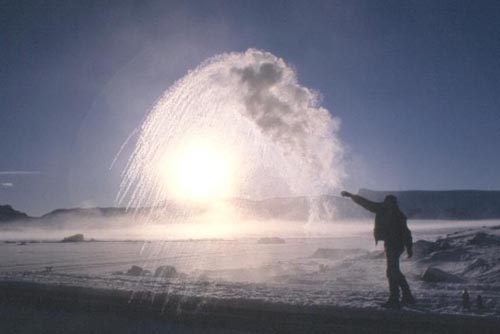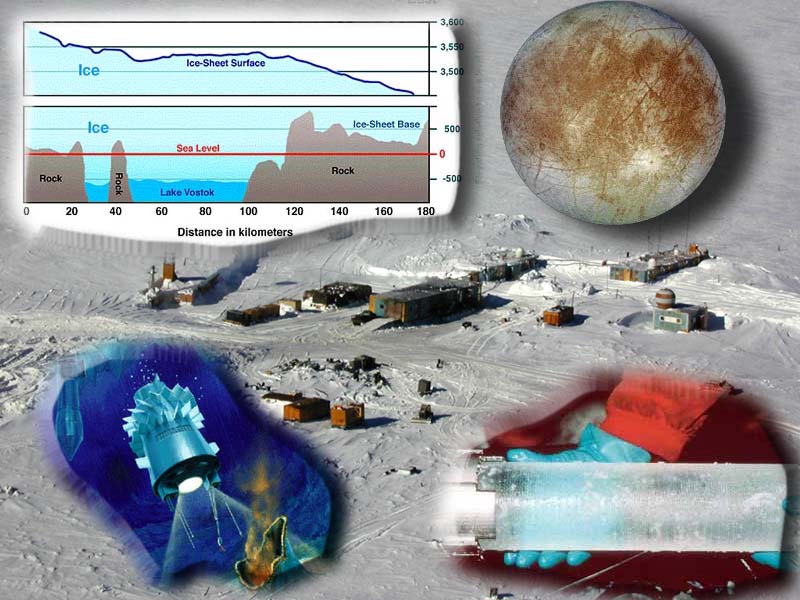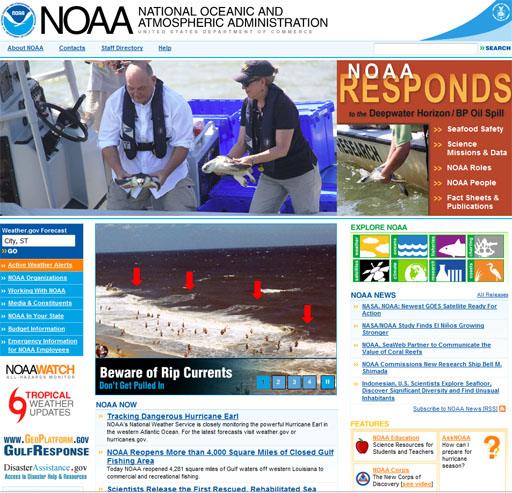
Exercise 1:
Go to the National Oceanic and Atmospheric Administration website -> NOAA . On the top left is a link called "About NOAA". Click that, and in your own words, tell me what NOAA is all about.

Exercise 2:
You could go to the NOAA home page and use the search field to search for "trends in carbon dioxide"; then look for the Data page to find another page for "Mauna Loa CO2 annual mean data." But since the web site is being reorganized, it's best that I give you the direct link to the data.
ftp://aftp.cmdl.noaa.gov/products/trends/co2/co2_annmean_mlo.txt
This page lists the data from 1959 to 2015. Subtract the ppm (parts per million) in 1959 from the ppm in 2015. That's the rise of CO2 in 56 years. Divide that rise by 56, to get the average yearly rise in CO2. At that rate of growth, what will the CO2 levels be 20 years from 2015? (hint: multiply the average yearly rise by 20 to get the growth in 20 years. Add that growth to the current 2015 levels. That will be the projected levels of CO2 in 20 years.)
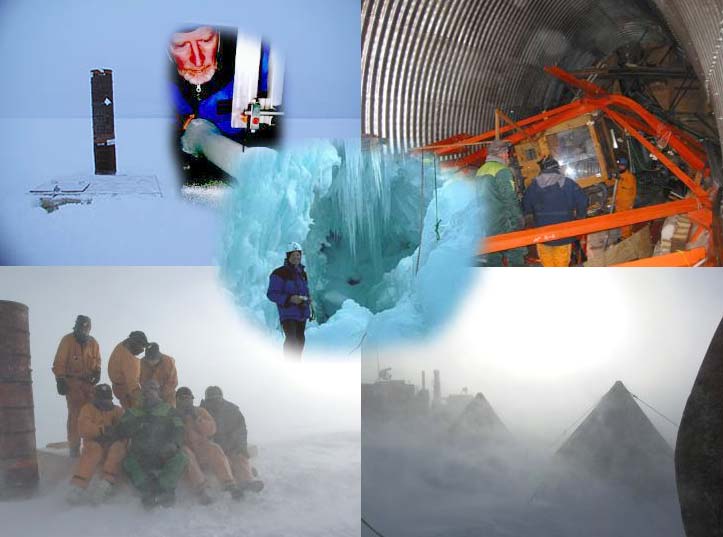
Exercise #3: The information about methane
is also at the Carbon Dioxide Information Analysis
Center. The information is from ice core taken at a place called
Law Dome in Antarctica. The upper left picture is the entrance to Law
Dome, which was built in the 80's but abandoned in the mid 90's because
the accumulation of snow and ice was crushing it. The upper right picture
shows red bars that were once straight and bracing the wall but now
are being crushed. The visitors to this site are in the lower left as
they endured 80 mile per hour wind at -20°C.
(wind chill must have been horrific). They slept in tents in the blizzard.
The below link takes you directly to a page that has a Graphics button.
http://cdiac.esd.ornl.gov/trends/atm_meth/lawdome_meth.html
When you click the Graphics button, it takes you to a page that has three links. Click on the first one. It begins with "Law Dome..." The graphic shows the last 1,000 years of methane levels measured in ppb (parts per billion). Using the chart, estimate the level in the year 1000 AD and the level 2000 AD. Include these two levels in your email to me. One reason proposed for the dramatic rise in methane is because we've been drilling for oil and methane (natural gas) is with the oil and leaks out. Also, be appreciative of how hard it was to get this data. Drilling in Antarctica is a perilous endeavor.
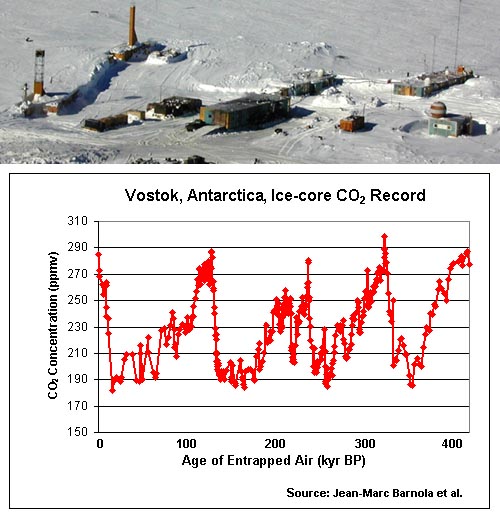
Exercise #4: A more difficult and ambitious project occurred
at a different site in Antarctica, a Russian outpost called Vostok. Four
records were set there. First record:
At Vostok the deepest drilling of ice
took place. The ice removed was nearly a half a
million years old. The graph shows the CO2
levels going back to over 400,000 years before present. The (kyr
BP) means kilo=1,000
years Before
Present. The graph shows that CO2
rises and falls about every 100,000 years. At present we seem to be on
the high point again. Temperature followed the same pattern.
Go to this link to see the data that built the graph and report on how
deep the drill went. Give it in meters and in miles. To calculate miles
from meters divide by 1,600. Also, report how many years old the ice at the farthest depth was estimated to be.
http://cdiac.ornl.gov/ftp/trends/co2/vostok.icecore.co2
